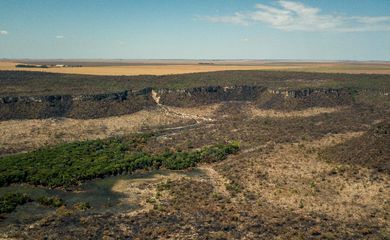Cerrado deforestation has emitted 135 million tons of CO2 since 2023

Deforestation in the cerrado biome generated emissions of more than 135 million tons of CO2 from January 2023 to July 2024. The volume corresponds to 1.5 times the total produced by Brazilian industry each year.

The survey was carried out by the Amazon Environmental Research Institute (IPAM) and released today (Sep. 18). The data were obtained through the Cerrado Deforestation Alert System (SAD Cerrado), which uses optical satellites from the European Space Agency’s Sentinel-2 sensor and compares images of areas at least six months apart to see if trees have been cut down.
The second largest biome in the country, and highly diverse, the cerrado extends over 13 of Brazil’s 27 states and is made up of three types of vegetation: savannah—which predominates, and was the most heavily destroyed during the period—forest, and grassland.
The savannah formations of the cerrado—which make up 62 percent of the biome’s vegetation—accounted for 88 million tons of CO2 (65%) emitted in the period. The burning of forest formations generated almost 37 million tons, while the destruction of grassland, which occupies six percent of the biome’s area, resulted in the emission of around 10 million tons.
Once again, IPAM highlighted the catastrophe that deforestation in the region known as Matopiba—which includes the states of Maranhão, Tocantins, Piauí, and Bahia—has represented for the biome. The fires in these states are the cause of 108 million tons of carbon dioxide being released into the atmosphere.
The volume corresponds to 80 percent of the total recorded in the biome and half of the amount dispersed by the transportation sector, as per data from the Greenhouse Gas Emissions and Removal Estimates System (SEEG).
On the list for Matopiba, the state with the highest volume of carbon dioxide released was Tocantins, with over 39 million tons. Altogether, 273 thousand hectares were deforested, and, in both 2023 and 2024, the state led the ranking of emissions from the clearing of savannah and forest formations, which together came to represent 98 percent of the state’s total.
Second place went to Maranhão, with 35 million tons of carbon dioxide emitted and 301 thousand hectares of native vegetation devastated. As IPAM pointed out, the state also leads the way in emissions from deforestation of grassland formations (6 million tons). The state of Bahia was third on the list, with 24 million tons, and Piauí came last, with 11 million.






